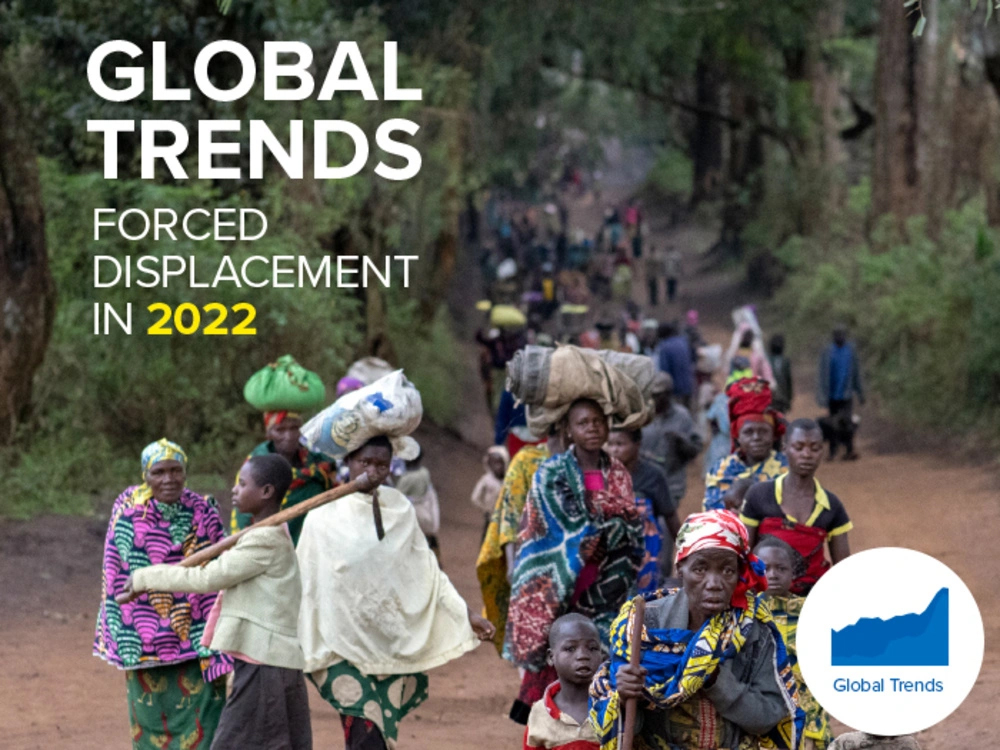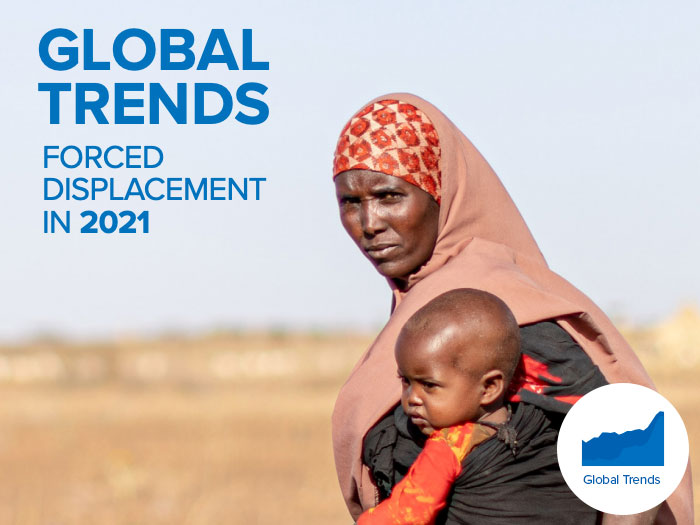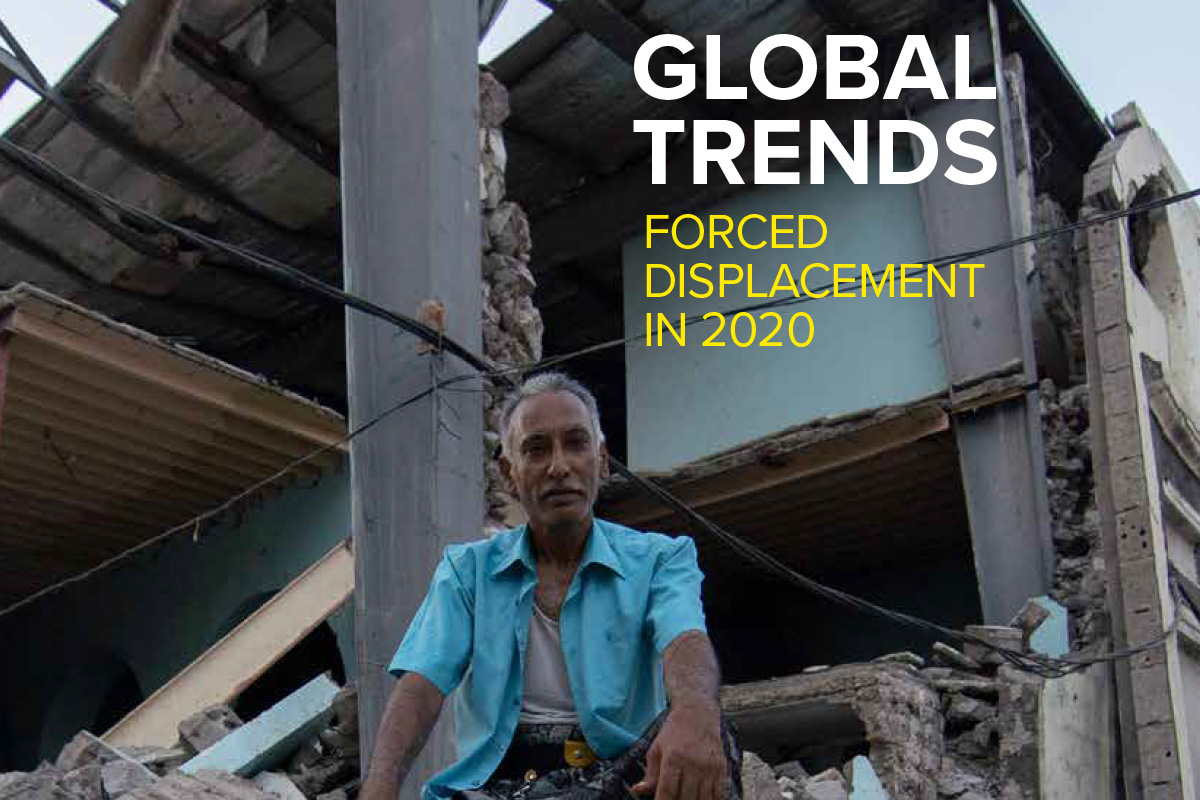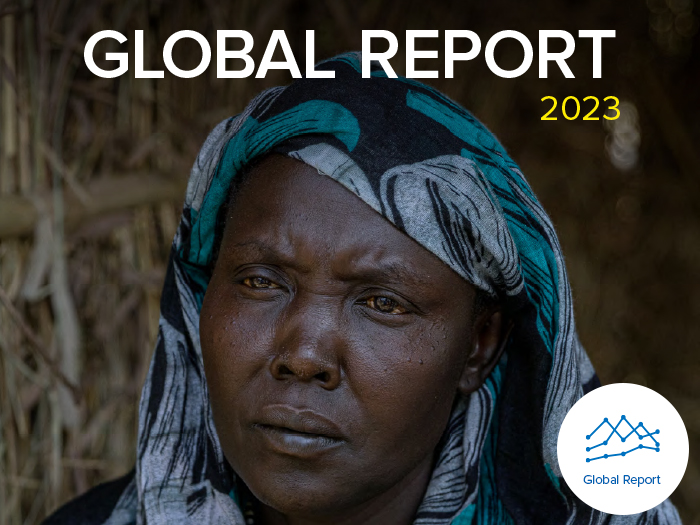Global Trends
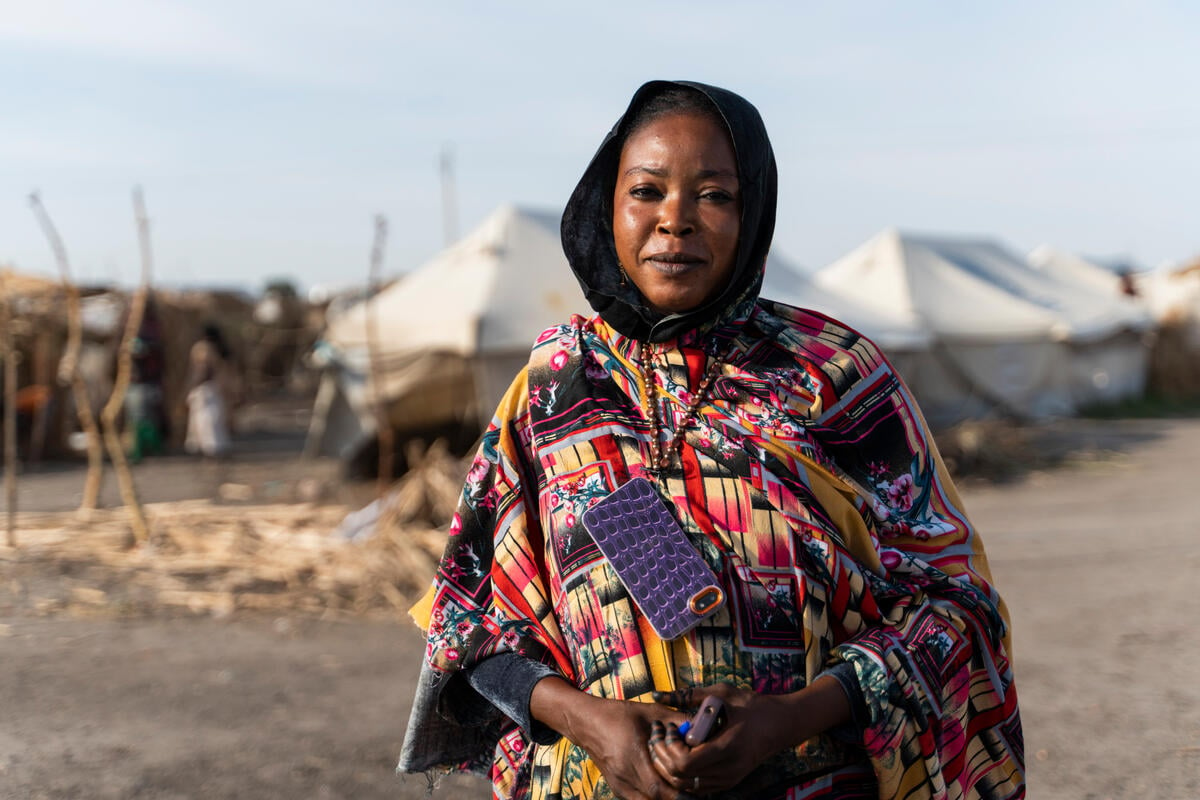
Global Trends
The increase to 117.3 million at the end of 2023 constitutes a rise of 8 per cent or 8.8 million people compared to the end of 2022 and continues a series of year-on-year increases over the last 12 years.
One in every 69 people, or 1.5 per cent of the entire world’s population, is now forcibly displaced. This is nearly double the 1 in 125 people who were displaced a decade ago.
Over 117.3 million people were forcibly displaced at the end of 2023.
This equates to more than 1 in every 69 people on Earth.
The number of displaced people has increased every year for 12 years.
Behind these stark and rising numbers lie countless human tragedies. That suffering must galvanize the international community to act urgently to tackle the root causes of forced displacement.
People forcibly displaced worldwide | 2014 – 2023
New forced displacements in 2023
New and ongoing conflicts have driven forced displacement across the globe. Conflict in Sudan broke out in April 2023, causing one of the largest humanitarian and displacement crises in the world. More than 6 million people were displaced within the country, with a further 1.2 million fleeing to neighbouring countries.
In Myanmar, escalating violence following the military takeover in February 2021, displaced more than 1.3 million people within the country in 2023. While in the State of Palestine, UNRWA estimates that between October and December 2023, up to 1.7 million people (or over 75 per cent of the population) were displaced by the conflict in the Gaza Strip, with some forced to flee multiple times.
Conflict-driven displacement
Forced displacement is a consequence of the failure to uphold peace and security.
As the frequency, duration and intensity of conflicts have increased, as measured by conflict-related fatalities in the graph below, so has the number of people forced to flee each year.
Refugees
The global refugee population increased by 7 per cent to reach 43.4 million during the year. This includes 31.6 million refugees and people in a refugee-like situation and 5.8 million other people in need of international protection under UNHCR's mandate, as well as 6 million Palestinian refugees under UNRWA's mandate. Compared to a decade ago, the total number of refugees globally has more than tripled.
The largest proportion of refugees globally were from Afghanistan and Syria, both with 6.4 million each, and together equivalent to one-third of all refugees under UNHCR’s mandate. These were followed by Venezuela (6.1 million refugees and other people in need of international protection) and Ukraine (6.0 million refugees).
Most refugees remain near their country of origin, with 69 per cent hosted in neighbouring countries at the end of 2023. Low- and middle-income countries continue to host the majority of the world’s refugees, with 75 per cent of refugees living in low- and middle-income countries.
HOW MANY REFUGEES ARE THERE IN THE WORLD?
At the end of 2023, there were 43.4 million refugees globally.
HOW MANY REFUGEES RETURNED HOME?
In 2023, nearly 1.1 million refugees returned home.
IS THE NUMBER OF REFUGEES INCREASING?
Yes. The number of refugees has tripled in the last decade.
SPOTLIGHT
Route-based approach
Refugees fleeing conflict or persecution may travel on routes alongside migrants. While the rights of refugees and migrants are distinct, those using the same routes face similar risks.
According to interviews with 31,500 refugees and migrants along the Central Mediterranean route, the predominant risks include severe threats to life, rape, torture, kidnapping, arbitrary detention, robbery and human trafficking, among other risks.
Between 2021 and 2023, 950 people are known to have died while crossing the Sahara Desert, although the actual number is believed to be much higher. During the same period, 7,600 people on the move died or went missing in the Mediterranean Sea.
UNHCR is working with partners to develop a data-driven route-based approach to strengthen protection for refugees and migrants, ensuring they have access to the services they need along key routes.
Internally displaced people
Most people who are forced to flee never cross an international border, remaining displaced within their own countries. Known as internally displaced people, or IDPs, they account for 58 per cent of all forcibly displaced people.
At the end of 2023, 68.3 million people remained internally displaced due to conflict and violence. An estimated 9.1 million people were displaced within Sudan, the largest internally displaced population ever reported. This was followed by Syria (7.2 million), and the Democratic Republic of the Congo (6.7 million).
At the end of 2023, 68.3 million people remained internally displaced within their own country.
IDPs constitute the majority of the forcibly displaced population globally, accounting for 58 per cent.
The number of IDPs displaced due to conflict or violence grew by 10 per cent compared to the end of 2022.
SPOTLIGHT
Conflict in Sudan
Conflict in Sudan broke out in April 2023. An estimated 1.2 million people had fled the country by the end of the year, with almost all Sudanese refugees hosted by neighbouring countries.
A further 9.1 million Sudanese were displaced within the country, including people displaced by previous conflict. Sudan now has the largest internally displaced population ever reported.
Prior to the April conflict, Sudan was also host to almost 1 million refugees, primarily from Eritrea, South Sudan and Syria. Many were forced to return to their home countries prematurely or move on to other countries.
Thousands of people are still being displaced in Sudan daily. Hunger is widespread, with 20 million people (42 per cent of the entire population) facing acute food insecurity.
Pictured: Sudanese refugees and South Sudanese returnees travel on a crowded barge from Renk to Malakal, South Sudan. The journey will take two days. © UNHCR/Ala Kheir
Solutions
In 2023, nearly 1.1 million refugees from 39 countries decided to return home from a total of 93 countries of asylum. Four out of five of those returning were Ukrainian or South Sudanese. However, as most returns occurred in contexts not entirely conducive to return in safety and dignity, they may not be sustainable.
In addition, 5.1 million people displaced within their own country returned to their place of origin during the year. Nearly 62 per cent of all IDP returns were within the Democratic Republic of the Congo (1.8 million) and Ukraine (1.3 million).
According to official government data, 158,700 refugees were resettled to third countries in 2023, representing 35 per cent more (40,000) than during the previous year. Despite the uptick in numbers, this still only accounted for 8 per cent of the estimated 2 million individuals globally identified by UNHCR as in need of resettlement. A further 30,800 refugees acquired the citizenship of their host country during the year and were locally integrated.
SPOTLIGHT
Forced displacement and climate change
Climate change is exacerbating the protection needs and risks for forcibly displaced people and contributing to new, onward and protracted displacement.
Extreme weather events, such as droughts, floods and extreme heat, are becoming more frequent and more intense. These have often impacted countries experiencing new or escalating conflicts.
Without urgent adaptation, mitigation and measures to address loss and damage, climate change impacts are expected to increasingly, and disproportionately, affect climate vulnerable States and communities, including forcibly displaced people.
Climate-related hazards, countries with more than one conflict-related death per 100,000 (2022) and the number of forcibly displaced people per country (2023)
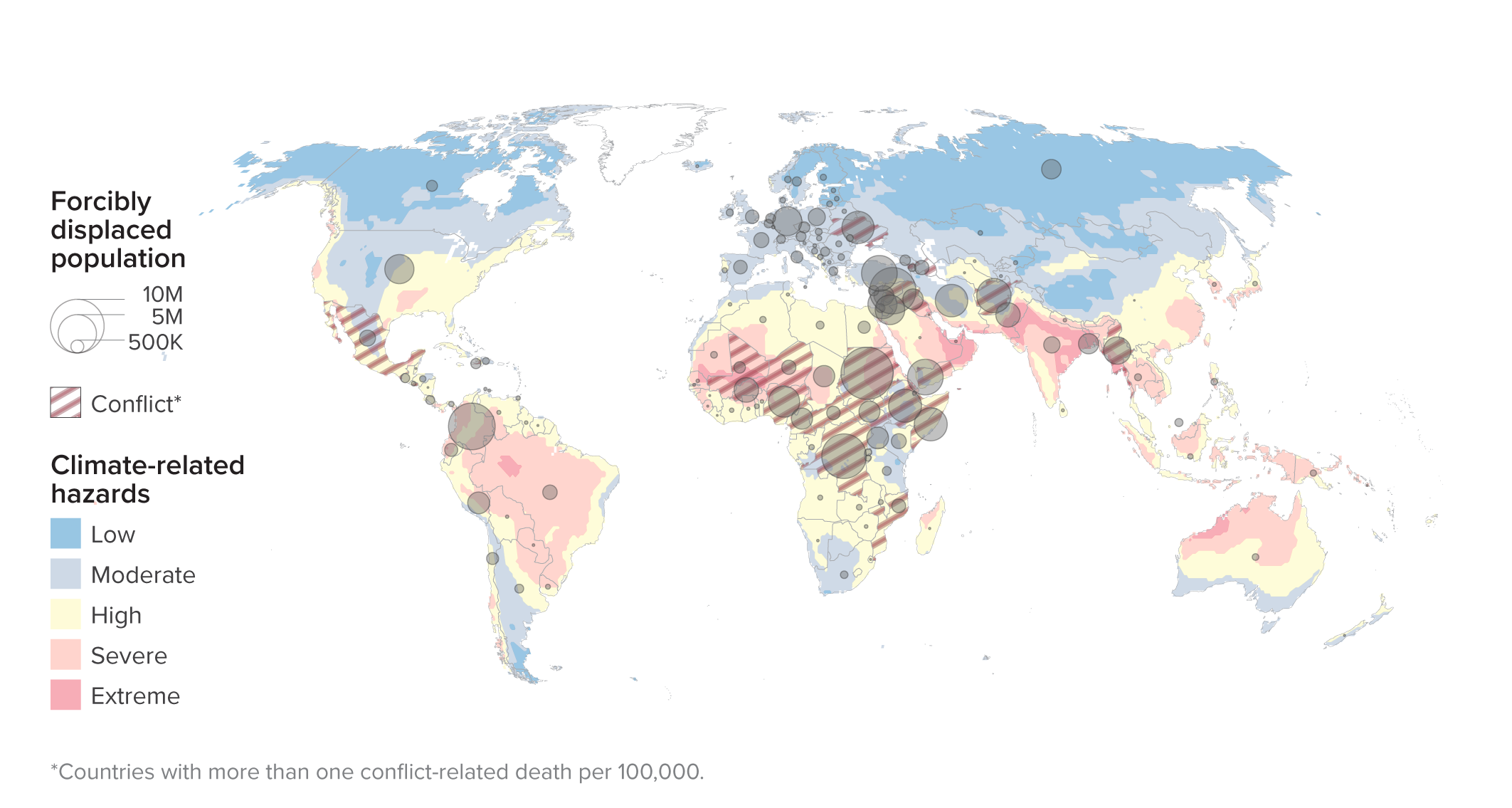
Climate-related hazards is an average in the period between 1981 and 2010. The number of forcibly displaced people located in a country (2023) and countries with more than one conflict-related death per 100,000 (2022) are indicated on top.
Download the report and annexes
Text and media 53
Global Trends 2023
UNHCR's Global Trends report presents the latest numbers of refugees, asylum-seekers, internally displaced and stateless persons worldwide.
Download the Global Trends report
Annexes and raw data
About the UNHCR Global Trends and Mid-Year Trends reports
UNHCR releases two flagship statistical reports on global forced displacement each year, the Global Trends report and the Mid-Year Trends report. The Global Trends report, released annually in June, analyses changes and trends in forcibly displaced populations in the previous calendar year (from 1 January to 31 December). It provides key statistics on the global numbers of refugees, asylum-seekers, internally displaced people and stateless people, as well as their main host countries and countries of origin.
In October each year, the Mid-Year Trends report is released to provide updated figures and analysis for the initial six months of the current year (from 1 January to 30 June). These figures are preliminary, and the final data is included in the subsequent Global Trends report.



